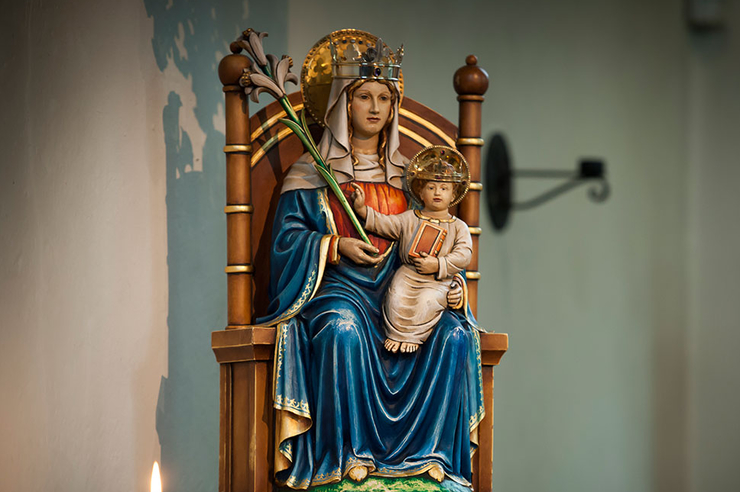
What could Hollywood teach us about the religious life? It’s easy to get discouraged by how badly movies and television portray the Catholic Church. It was not always the norm, however, and I decided to host a summer movie series to remind everyone that “secular” movies can teach us something about religious life and even… holiness!
For the series I picked movies from an age in Hollywood where the Catholic Church is treated as if it’s, well, normal. The priests and religious women in these movies are not strategically placed there for laughs or to be the token religious person in a scene. Nor are they caricatures, like the overly stern nun or bumbling priest. Instead, these religious are portrayed as actual people, with strengths and weaknesses, and are held up as heroes—not in flashy ways, but in everyday ordinary ways.
The four movies were The Trouble with Angels (1956), Going My Way (1944), The Bells of St. Mary’s (1945), and I Confess (1953).
In each of these movies, a priest or religious woman is the main character, and in each of them, they quietly manifest three important lessons about the priesthood and religious life.
1. Religious life is a choice worth choosing.
In each of these four movies, the main character shows that they chose religious life. It wasn’t something they fell into because they couldn’t find someone to marry. It wasn’t something they chose because they had no other opportunities or alternatives. They testify to the fact that religious life isn’t a second choice or a default, but a life they desired and love.
In I Confess, Father Michael Logan insists to a former girlfriend, “Do you not understand? I chose to be what I am. I believe in what I am.” The Mother Superior in The Trouble with Angels reveals why she gave up a future as a successful designer in Paris: “I found something better.” Giving one’s life in service to Christ and his Church is not portrayed as foolish, odd, or oppressive, but as something noble and beautiful. It is a life worth choosing.
2. The priesthood and religious life is lived in service to Christ and the laity.
In each of the films, the priests and religious women give their lives in service – not in flashy ways, but in everyday ways. With the exception of Father Logan in I Confess, these men and women are not being asked to dramatically offer up their lives in a single courageous act of martyrdom. Rather, they are living each day in small acts of service. They are showing mercy to boys and girls who need to be loved, helping parishioners with everyday needs, holding their tongue, making amends with rivals, counseling and giving hope to the weary, and manifesting God’s love for his people.
They are a reminder to us of how we are called to live. While those of us in the lay state of life do not give our lives the same way priests and religious do, and we aren’t surrendering our lives in poverty, chastity, and obedience, we are all called to live our lives in service to God and neighbor according to our state of life. Very often, this is not done dramatically but quietly, in humble, everyday acts of love.
3. The lives they live are abundant lives.
Christ said, “I came so that they might have life and have it more abundantly” (Jn 10:10). The secular world would tell us that a life given to Christ is restrictive and stifled. Misunderstanding freedom, the person who has never truly known the life of Christ cannot see how surrendering one’s life actually gives freedom and joy. Bing Crosby in Going My Way or The Bells of St. Mary’s adequately portrays the fullness of life that is gained when one lives it in service to another.
These men and women are portrayed, rightly so, as full of life, and they give that life to those with whom they come in contact. I don’t want to ruin the movies for anyone who has not seen them, but suffice to say, people are changed by the simple love and witness of these men and women. Religious life is fertile and life-giving—not in a sexual way, but in the spiritual fecundity of a Father O’Malley and Sister Mary Benedict inspiring a Horace P. Bogardus or Mother Superior witnessing to Mary Clancy.
These films don’t exhaust the catalog of good “secular” movies about Catholicism, thankfully, and there are others that have been made more recently. But I highly recommend these four—especially watched as a series—to remind us what a life lived for Christ is all about.
Editor’s Note: This article was first published on Integrated Catholic Life™ on July 22, 2016.















